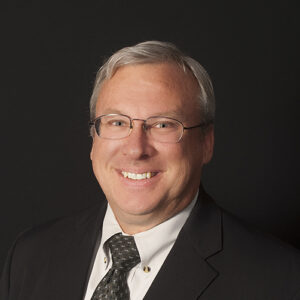Dents in Metal R-Panel Roofing – What can they tell us about a hailstorm?
by David Teasdale, P.E., Haag Principal Engineer
Hail-caused dents
Most metal R-panel (raised-rib) roofing is structural, spanning across purlins or other structural members without substrate support. Even when backed by a roof deck, sheet metal comprising raised ribs is not supported. One statement that can be made about most metal roofing is that it is fairly easily dented. Since the dents are permanent, metal roofing offers an accumulated history of hail events at a given site. In general, if a significant area of open, exposed metal roofing is undented, most inspectors would reasonably conclude that large hail had not fallen at the site since the metal roofing was installed. When the metal is observed to be dented, inspectors often can derive or infer various characteristics about past hailfall, such as hailstone size and direction of fall.
Hailstone size
A variety of factors affect the impact energy of a hailstone (e.g., size, hardness, impact angle), and they will also affect dent size and shape. With respect to impact of sheet metal, studies by Haag and others have shown there is an inner dent caused by the direct deformation of the hailstone, and there is also a surrounding area of change that results from buckling of the nearby metal. Because the buckled area varies with hailstone size and impact energy, the inner dent offers the best information about the hail size. Discerning and measuring the inner dent in the field can be difficult, and most inspectors document the total dent width. (Lightly rubbing chalk across a dent captures the total buckle.) There is nothing wrong with measuring the total dent size; however, the inspector should understand what he or she is actually measuring. The total dent is usually not the shape obtained by metal deforming to the surface of the hailstone, and the relationship between the total dent diameter and the hailstone size varies with hailstone size, metal type, and metal thickness.
Testing
Haag Engineering performs ongoing impact tests on roofing materials that help correlate controlled laboratory tests to observations that can be made in the field. One recent test involved impacting 26-gauge, galvanized metal panels to compare dent sizes. A test panel was impacted by ¾”, 1”, 1¼”, 1½”, 1¾”, and 2” molded ice spheres. These were propelled by the Haag IBL-7 to develop no less than free-fall energies of normally occurring hailstones of the same size. Targets for impacts included the flat pans and flat area of the trapezoidal lap seam. In general, testing showed that the panels could be dented by any sized hailstone, and the ratio of dent size to hail size varied from about 40% to 70% when considering the inner dent across this range of hail size. When considering the total dent diameter, the ratio was greater, and dents around 1” across required large hailstones around 1½” to 1¾” in size. Dents formed in the top of a rib were elongated, and they were hardest to interpret. No fracturing or spalling of the galvanized coating was visible at any of the hail-dented regions.
Field Observations
Field measurements of dents can vary depending on lighting, angle of view, and other variables, including the inspector’s judgment. This is particularly true when small hail is involved. Certainly, large hail-caused dents in steel panels correlate with very large hail, and they may be useful in searching weather records for a storm date. Of particular note, Haag research has found that impact on the top of a rib near its edge could create a dimple in the side of the rib that implied a false sideward direction to the hailfall.

David Teasdale, P.E., Principal Engineer
David Teasdale, Principal Engineer and VP of Engineering, specializes in Structural Evaluations, Earthborne and Airborne Vibrations, Geotechnical Evaluations, General Civil Engineering, & Wind Engineering and Related Storm Effects. He is the primary author and presenter of a Haag classroom and online seminar course, titled “California Earthquake Adjuster Accreditation”. See his profile here.
